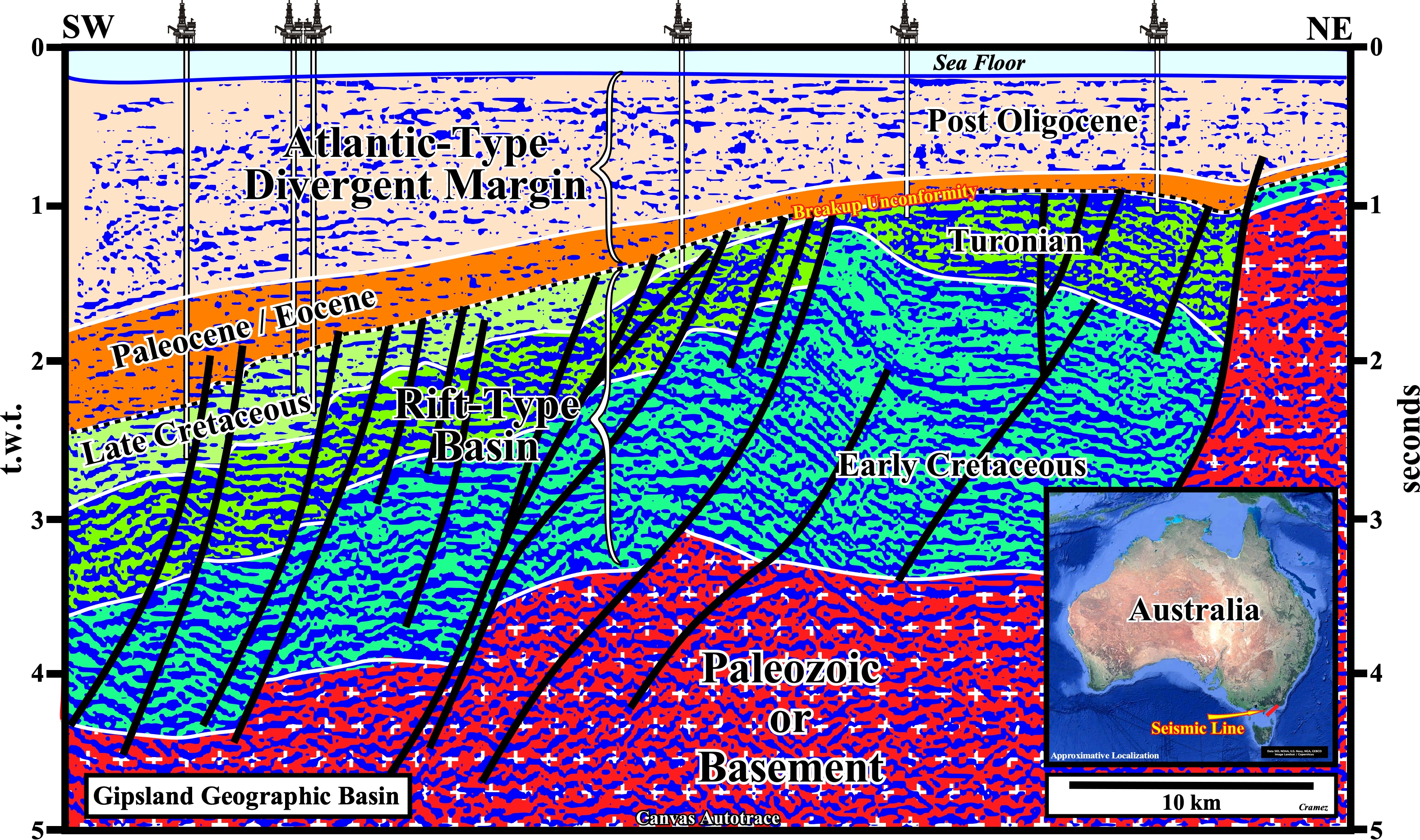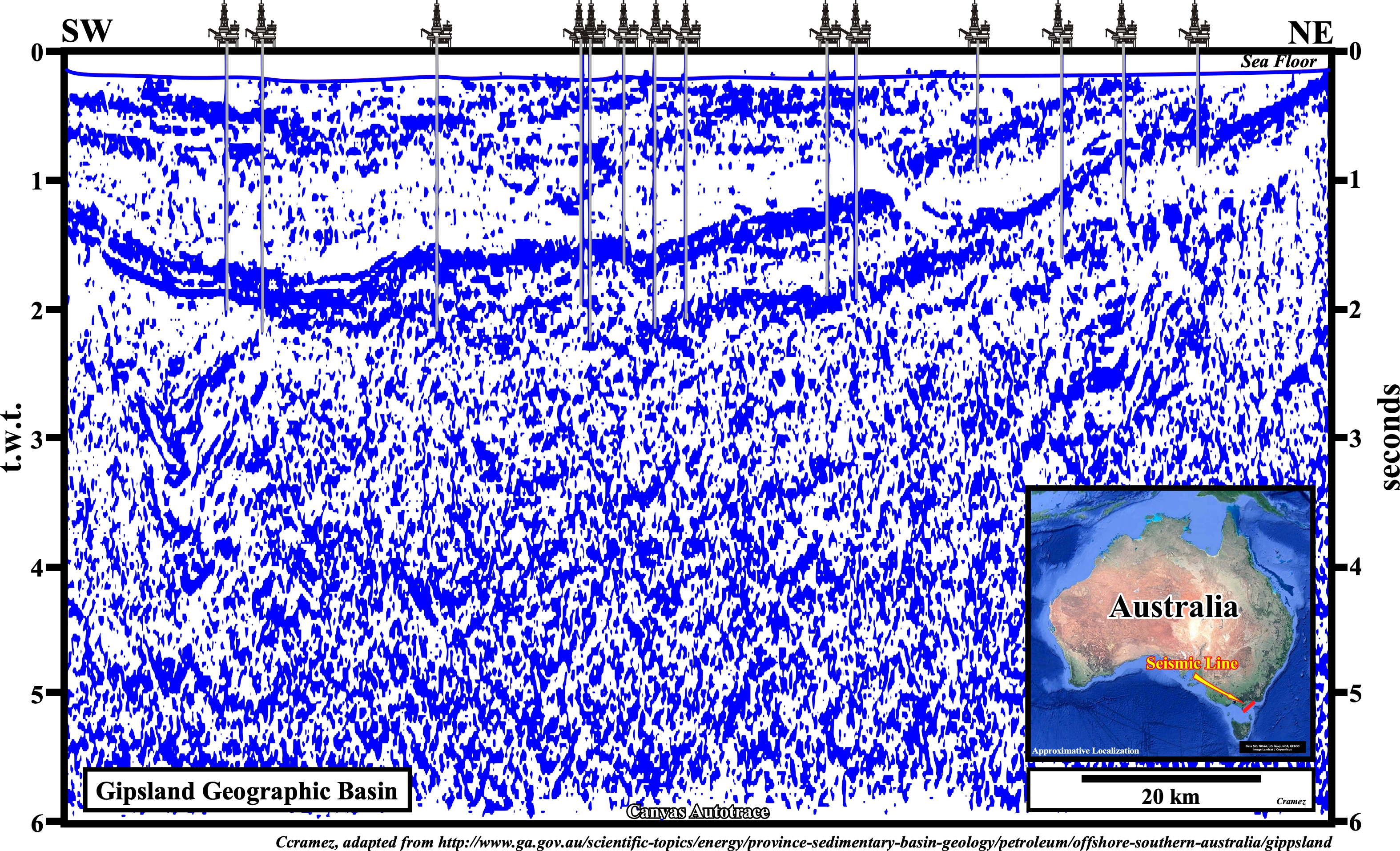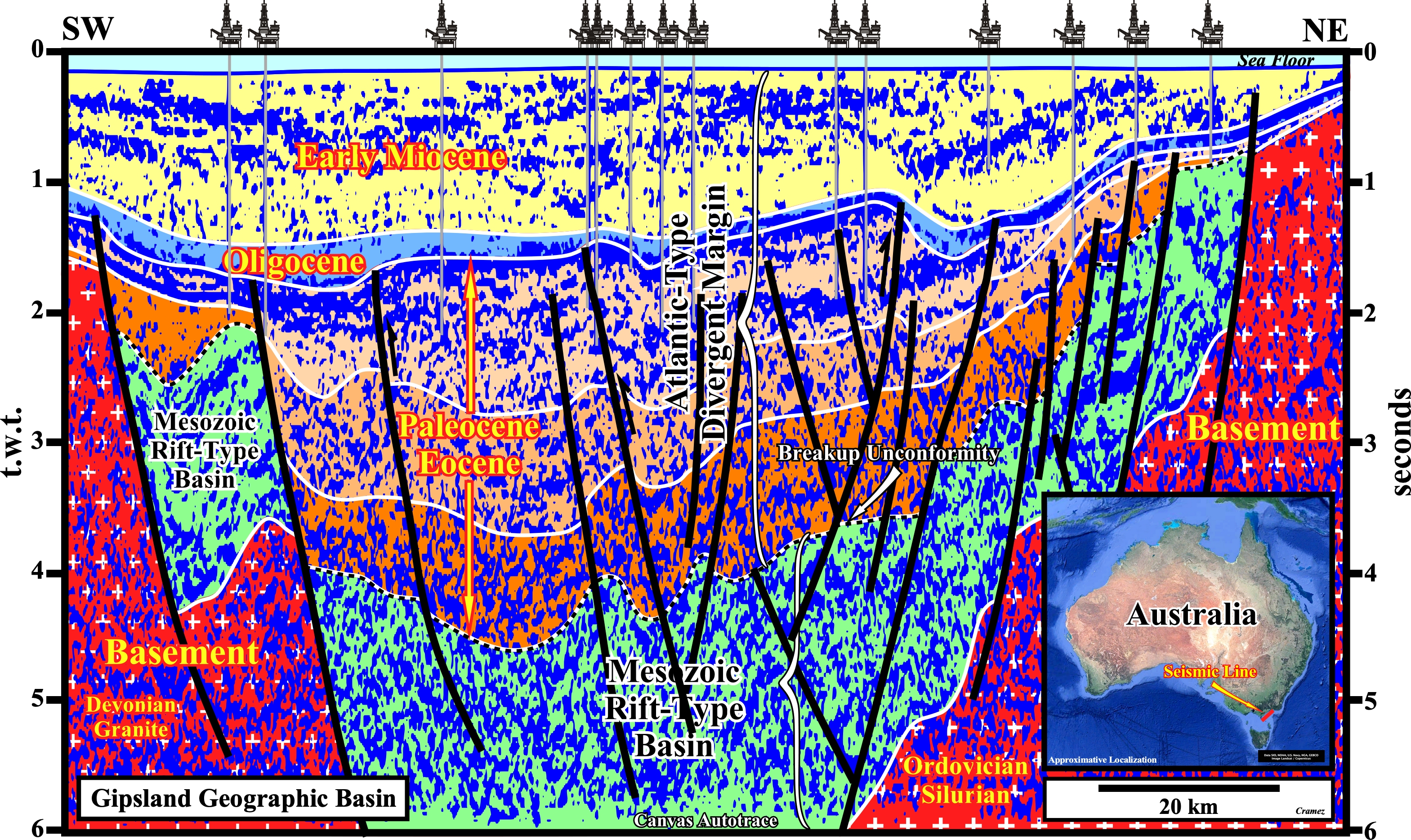

SE Australia Offshore
Gippsland Geographic Basin

The Gippsland offshore is bounded to the north by basement of the Eastern Uplands (Paleozoic) and to the southwest by the Bassian Rise (Paleozoic basement feature that separates it from the Bass Basin further south. The Gippsland Geographic Basin forms the easternmost part of an Early Cretaceous rift system between Antarctica and Australia. Initial basin architecture consisted of a rift valley complex composed of multiple, overlapping or isolated, east-trending half grabens. Continued rifting into the Late Cretaceous generated a broader extensional geometry that consisted of a depocenter flanked by fault-bounded platforms and terraces to the north and south. The extensional faults were reactivated prior to breakup in the Tasman Sea off the Gippsland Basin. To the east, the Central Deep is characterized by rapidly increasing water depths; these exceed 3000 m in the Bass Canyon (Hill et al, 1998). The eastern boundary of the basin is poorly defined and has been related to the Cape Everard Fault System, a prominent north-northeast striking basement high.


On this Canvas autotrace, the substratum of the Gippsland geographic basins, which is limited by the pre-rifting unconformity, is either the Paleozoic rocks or the basement. The rift-type basins are Mesozoic in age, while the rocks of the Atlantic-type divergent margin range from the Eocene-Paleocene to Recent. The breakup unconformity, which individualizes the rift-type sediments from the margin sediments, has, often, a Maastrichtian age. Not all seismic lines of this areas have the typical geometry illustrated on this autotrace, in which the large majority of the normal faults die at the breakup unconformity (see next autotrace).


Comparing this tentative interpretation with the previous one, it is easy to understand that in the areas where there is a reactivation of the rifting normal faults, as reverse faults, the shortening of the sediments changes strongly the geometry of the basins. The reactivation is post-depositional and it seems to have occurred during Oligocene time, which, completely, exclude the possibility of consider the lower Cenozoic sedimentary packages as deposited in association with a differential subsidence, i.e., deposited in a rift-type basin.
Send E-mails to carlos.cramez@bluewin.ch with comments and suggestions to improve this atlas.
Copyright © 2001 CCramez
Last update:
2022